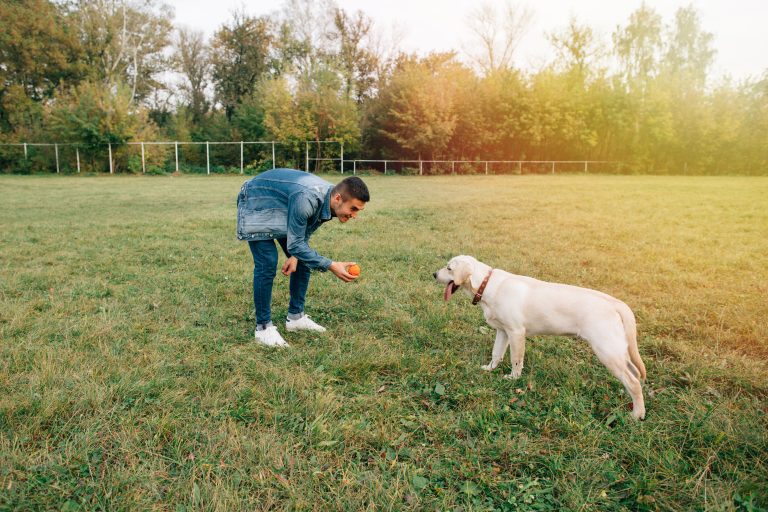Training Lazy Breeds Without Pushing Too Hard
Training lazy dog breeds takes a different approach than working with high-energy pups. Breeds like Bulldogs, Basset Hounds, and Great Danes may not respond well to intense sessions or constant repetition. That doesn’t mean they can’t learn—it just means they need a slower pace, extra encouragement, and carefully timed rewards. In this post, we’ll explore how to motivate low-energy dogs using gentle training techniques that respect their temperament and still achieve results.
Historically, lazy breeds like the Bulldog or Shih Tzu were often bred for companionship rather than intense physical exertion. Statistics show that over 70% of pet owners struggle to engage their lazy pets in regular activities. Experts suggest incorporating short, positive training sessions that focus on mental stimulation to effectively train without pushing too hard.
Training Lazy Breeds Without Pushing Too Hard
Training lazy breeds can be challenging but also rewarding. These dogs, like Bulldogs and Basset Hounds, naturally enjoy lounging. To motivate them, it’s important to use short, fun sessions. Including treats and mental games can make training more engaging. Keeping it positive ensures your dog enjoys the process.
Consistency is key when working with less active dogs. Routine helps them understand what to expect. Regular training at the same time each day can build a habit. Also, sessions should be brief to match their low energy levels. This way, they won’t feel overwhelmed.
Using varied activities can keep things interesting. Incorporate a mix of commands like sit, stay, and fetch. Try using puzzle toys to stimulate their minds. Sometimes, just a short walk combined with training can be effective. Remember, variety prevents boredom for both you and your dog.
Patience and understanding are crucial. Every dog learns at their own pace. Celebrate small achievements to keep them motivated. Never push too hard; it could discourage them. With the right approach, even lazy breeds can excel in training.
Understanding the Temperament and Activity Level of Lazy Breeds
Lazy breeds often have a temperament that prioritizes relaxation over activity. Breeds like the Pug and the French Bulldog are prefect examples. They naturally have lower energy levels and enjoy a laid-back lifestyle. Such dogs are content with minimal exercise. Understanding this helps set realistic training expectations.
Their activity level can vary but is generally low. While some may enjoy short play sessions, long, strenuous activities are not their preference. This inclination towards rest can be linked to their physical attributes. For instance, Bulldogs have a stocky build that limits endurance. Recognizing these traits can guide appropriate training methods.
Owners should note the typical daily activity requirements of their breed. Lazy dog breeds might only need a few short walks per day. A table can help summarize their needs:
| Breed | Daily Exercise Needs |
|---|---|
| Pug | 20-30 minutes |
| French Bulldog | 15-20 minutes |
| Bulldog | 30 minutes |
Mental stimulation is just as important. Lazy breeds benefit from interactive toys and games. This doesn’t require physical exertion but keeps their minds active. Simple activities like treasure hunts with treats can be enjoyable. Balancing physical and mental exercises is key to keeping them healthy.
Techniques and Tips for Engaging Lazy Breeds in Training
Engaging lazy breeds in training requires creativity and patience. One effective technique is to use high-value treats that your dog loves. This can motivate even the laziest breeds to participate. Keep sessions short to match their attention span and energy level. Frequent breaks ensure they don’t get overwhelmed.
Interactive toys can add a fun element to training. Puzzle toys filled with treats can make learning exciting. These toys also provide mental stimulation. Some dogs enjoy games like hide-and-seek. It encourages them to use their instincts and keeps them active.
Positive reinforcement is crucial. Rewarding desired behaviors with treats or praise builds a positive association with training. Consistency and repetition help reinforce learning. If your dog seems disinterested, try switching up activities. A varied approach can keep training sessions fresh and engaging.
Group classes or playdates with other dogs can also be beneficial. Social interactions can motivate lazy breeds. Observing other dogs can encourage them to participate. This setting can also help with obedience and socialization skills. Taking your dog to new environments prevents boredom.
Motivating Your Dog Without Overexertion
Motivating your dog without overexertion involves finding the right balance. Some dogs have lower energy levels and get tired quickly. For these dogs, short bursts of activity can be very effective. You might try a quick game of fetch or a brief training session. The goal is to keep them engaged without causing exhaustion.
Using high-value rewards can be a great motivator. Treats, favorite toys, or extra attention can work wonders. Make sure the rewards are something your dog truly enjoys. This keeps their interest high and makes the effort worthwhile. Frequent, small rewards work better than occasional large ones.
Vary the activities to keep your dog interested. Mixing up walks, playtime, and mental games can prevent boredom. For example, one day you could go for a walk, and the next day you could play a puzzle game. This variety keeps both you and your dog engaged. It’s a way to keep things interesting.
Social interactions can also be motivating. Playdates with other dogs or visits to the dog park can be stimulating. Your dog might be more inclined to be active in the company of other dogs. Social interactions can make exercise more enjoyable. It’s a fun way for your dog to burn off some energy.
Incorporate training into daily routines. Simple commands like “sit,” “stay,” or “come” can be practiced throughout the day. This makes training feel less like a chore. It also reinforces good behavior consistently. Just a few minutes here and there can make a big difference.
Frequently Asked Questions
Training lazy breeds can be challenging but rewarding. Here are some common questions and answers to help you effectively train your low-energy dog.
1. What are some effective methods for training lazy breeds?
Gentle, consistent training methods work best for lazy breeds. Use positive reinforcement like treats and praise to encourage desired behaviors. Short, frequent training sessions are more effective than long ones. This keeps the dog engaged without overwhelming them.
Incorporate games and toys to make training enjoyable. Puzzle toys can offer mental stimulation and keep your dog interested. Regularly switch up activities to maintain their attention. Patience and persistence are key to success.
2. How much exercise do lazy breeds need?
Lazy breeds generally need less exercise than more active breeds. However, they still require daily physical activity to stay healthy. Aim for short, gentle walks a few times a day. This way, they get enough movement without getting too tired.
It’s also important to combine physical exercise with mental stimulation. Use interactive toys and games to keep their minds active. This helps prevent boredom and keeps your dog mentally fit as well.
3. What kind of toys are best for lazy breeds?
Interactive and puzzle toys are excellent choices for lazy breeds. These toys provide mental stimulation and keep the dog engaged. Toys that dispense treats can also motivate them to play and learn.
Comfortable chew toys can help keep lazy breeds occupied. Soft toys and snuggle buddies can be a good option too. Always rotate toys to maintain their interest and avoid boredom.
4. How can I keep my lazy dog engaged indoors?
Engaging a lazy dog indoors involves a mix of physical and mental activities. Hide treats around the house for your dog to find. This can be a fun and stimulating game for them.
Interactive games like tug-of-war can also be effective. Use puzzle toys to challenge their minds. Ensure you incorporate plenty of praise and rewards to make the activities more enjoyable.
5. Can short training sessions be effective for lazy breeds?
Yes, short training sessions are very effective for lazy breeds. These dogs have limited attention spans and get tired quickly. Keeping training sessions brief prevents them from becoming overwhelmed.
Focus on one or two commands per session. Make sure to use high-value treats and positive reinforcement. By keeping sessions short and fun, your dog will be more likely to participate and learn.

Final Thoughts
Training lazy breeds can be a unique challenge, but it is definitely manageable with the right approach. By understanding their temperament and activity levels, you can tailor training sessions to be effective and enjoyable. Using short, engaging techniques ensures your dog remains interested without feeling overwhelmed.
Patience and consistency are key when working with these breeds. Incorporate positive reinforcement and varied activities to keep things fresh. With dedication and love, your low-energy dog can learn and thrive in their training journey.








